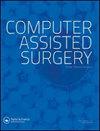10-Year patient satisfaction compared between computer-assisted navigation and conventional techniques in minimally invasive surgery total knee arthroplasty
IF 1.5
4区 医学
Q3 SURGERY
引用次数: 6
Abstract
Abstract Background: Both minimally invasive surgery (MIS) and computer-assisted surgery (CAS) in total knee arthroplasty have been scientifically linked with surgical benefits. However, the long-term results of these techniques are still controversial. Most surgeons assessed the surgical outcomes with regard to knee alignment and range of motion, but these factors may not reflect subjective variables, namely patient satisfaction. Purpose: To compare satisfaction and functional outcomes between two technical procedures in MIS total knee arthroplasty, namely computer-assisted MIS and conventional MIS procedure, operated on a sample group of patients after 10 years. Methods: Seventy cases of posterior-stabilized total knee prostheses were implanted using a computer-assisted system and were compared to 74 cases of matched total knee prostheses of the same implant using conventional technique. Both groups underwent arthrotomy by 2 cm limited quadriceps exposure minimally invasive surgery (2 cm Quad MIS). At an average of 10 years after surgery, self-administered patient satisfaction and WOMAC scales were administered and analyzed. Results: Demographic data of both groups including sex, age, preoperative WOMAC and post-operative duration were not statistically different. Post-operative WOMAC for the computer-assisted group was 38.94 ± 5.68, while the conventional one stood at 37.89 ± 6.22. The median of self-administered patient satisfaction scales of the computer-assisted group was 100 (min37.5–max100), while the conventional one was 100 (min25–max100). p Value was 0.889. There was one re-operative case in the conventional MIS group due to peri-prosthetic infection which was treated with debridement, polyethylene exchanged and intravenous antibiotics. Conclusions: The 10-year outcomes of computer-assisted MIS total knee arthroplasty are not superior to that of the conventional MIS technique in function and patient satisfaction. 10 years may not be enough to show the difference between these two techniques.计算机辅助导航与传统微创全膝关节置换术10年患者满意度比较
背景:在全膝关节置换术中,微创手术(MIS)和计算机辅助手术(CAS)都与手术益处有科学联系。然而,这些技术的长期结果仍然存在争议。大多数外科医生评估手术结果时都考虑到膝关节对齐和活动范围,但这些因素可能不能反映主观变量,即患者满意度。目的:比较计算机辅助MIS和传统MIS两种MIS全膝关节置换术的满意度和功能结果。方法:采用计算机辅助系统植入70例后稳定型全膝关节假体,并与74例相同假体采用常规技术匹配的全膝关节假体进行比较。两组均行2 cm有限四头肌暴露微创手术(2 cm Quad MIS)关节切开术。术后平均10年,对患者自我满意度和WOMAC量表进行分析。结果:两组性别、年龄、术前WOMAC、术后时间等人口学数据差异无统计学意义。计算机辅助组术后WOMAC为38.94±5.68,常规组为37.89±6.22。计算机辅助组自我给药患者满意度量表中位数为100 (min37.5-max100),常规组为100 (min25-max100)。p值为0.889。常规MIS组1例因假体周围感染再手术,行清创、聚乙烯置换及静脉注射抗生素治疗。结论:计算机辅助MIS全膝关节置换术的10年结果在功能和患者满意度方面并不优于传统MIS技术。10年可能不足以显示这两种技术之间的差异。
本文章由计算机程序翻译,如有差异,请以英文原文为准。
求助全文
约1分钟内获得全文
求助全文
来源期刊

Computer Assisted Surgery
Medicine-Surgery
CiteScore
2.30
自引率
0.00%
发文量
13
审稿时长
10 weeks
期刊介绍:
omputer Assisted Surgery aims to improve patient care by advancing the utilization of computers during treatment; to evaluate the benefits and risks associated with the integration of advanced digital technologies into surgical practice; to disseminate clinical and basic research relevant to stereotactic surgery, minimal access surgery, endoscopy, and surgical robotics; to encourage interdisciplinary collaboration between engineers and physicians in developing new concepts and applications; to educate clinicians about the principles and techniques of computer assisted surgery and therapeutics; and to serve the international scientific community as a medium for the transfer of new information relating to theory, research, and practice in biomedical imaging and the surgical specialties.
The scope of Computer Assisted Surgery encompasses all fields within surgery, as well as biomedical imaging and instrumentation, and digital technology employed as an adjunct to imaging in diagnosis, therapeutics, and surgery. Topics featured include frameless as well as conventional stereotactic procedures, surgery guided by intraoperative ultrasound or magnetic resonance imaging, image guided focused irradiation, robotic surgery, and any therapeutic interventions performed with the use of digital imaging technology.
 求助内容:
求助内容: 应助结果提醒方式:
应助结果提醒方式:


